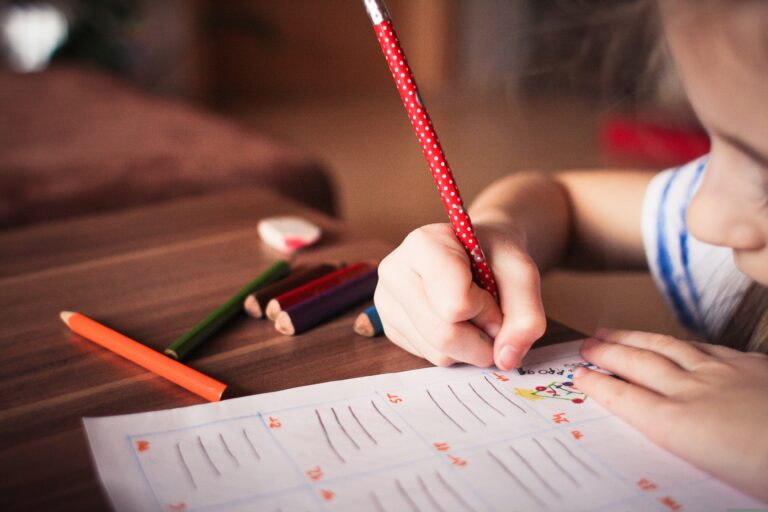Creativity is a vital skill that shapes not just individual growth, but also the future of communities and nations. In Pakistan, where cultural diversity and rich traditions abound, fostering creativity in children can pave the way for innovative thinking and problem-solving. This blog will explore various strategies to help cultivate and polish creativity in Pakistani kids, ensuring they are equipped to thrive in an ever-evolving world.
Understanding Creativity
Creativity is more than just artistic expression; it encompasses critical thinking, imagination, and the ability to approach problems from different angles. In children, creativity manifests in many ways, from storytelling and art to scientific inquiry and imaginative play. Nurturing this ability is crucial, as it not only boosts self-confidence but also prepares children to adapt to future challenges.
The Role of Education
Integrating Creative Learning in Schools
One of the most effective ways to foster creativity is through education. Pakistani schools can integrate creative learning into their curricula by adopting a holistic approach that values arts and humanities alongside STEM (Science, Technology, Engineering, Mathematics).
- Project-Based Learning: Encourage schools to implement project-based learning where students can explore real-world problems creatively. For example, a science project could involve designing an eco-friendly water filtration system, allowing students to think critically and innovatively.
- Arts Integration: Schools should incorporate arts into every subject. For instance, history lessons can be supplemented with creative writing or visual art projects that encourage students to express their understanding in diverse ways.
- Flexible Learning Environments: Traditional classrooms can stifle creativity. By creating flexible learning spaces that allow for collaboration and experimentation, schools can foster an environment where creativity flourishes.
Extracurricular Activities
Extracurricular activities play a crucial role in developing creativity. In Pakistan, many children participate in various clubs and organizations outside of school. Encouraging involvement in activities such as:
- Art and Craft Clubs: These can help children explore their artistic side, learn new techniques, and express their emotions visually.
- Theater and Drama Groups: Participating in drama helps children develop their storytelling abilities and boosts confidence in public speaking.
- Music and Dance Classes: These not only enhance creative skills but also promote teamwork and self-expression.
Parental Involvement
Parents are instrumental in nurturing creativity at home. Here are some practical strategies for parents:
- Encourage Open-Ended Play: Providing children with materials that allow for open-ended play—such as building blocks, art supplies, or dress-up clothes—can stimulate their imaginations and problem-solving skills.
- Promote Storytelling: Encourage children to tell stories, whether through writing, drawing, or oral narratives. This helps develop their language skills and creative thinking.
- Limit Screen Time: While technology can be beneficial, excessive screen time can hinder creativity. Encourage children to engage in activities that require active participation rather than passive consumption.
- Create a Safe Space for Expression: Establishing a home environment that welcomes creativity is essential. This can include a dedicated area for art projects or a routine family storytelling night.
Community Engagement
Local communities can play a significant role in fostering creativity. By organizing workshops, festivals, and creative spaces, communities can provide children with opportunities to explore their creative potential.
- Art and Craft Fairs: Organizing local fairs that showcase children’s artwork can motivate young artists and give them a platform to express themselves.
- Workshops and Classes: Communities can offer free or low-cost workshops in various creative fields, such as painting, music, or coding. These workshops can be particularly beneficial in underserved areas.
- Creative Spaces: Establishing community centers that serve as creative hubs can provide children with access to resources and mentorship in arts and innovation.
Access to Resources
In Pakistan, access to creative resources can be challenging, particularly in rural areas. Addressing this gap is crucial for nurturing creativity:
- Mobile Libraries and Art Trucks: Initiatives that bring books, art supplies, and creative workshops directly to underserved communities can help reach children who may not have access to these resources.
- Digital Platforms: Utilizing technology, such as online courses and resources, can provide children with the tools they need to explore their creativity.
- Partnerships with NGOs: Collaborations between schools and non-governmental organizations can help secure funding and resources for creative programs, particularly in areas lacking infrastructure.
Technology as a Tool
While there are concerns about excessive screen time, technology can also be a powerful ally in fostering creativity:
- Coding and Game Design: Teaching children the basics of coding and game design encourages logical thinking and creativity. Platforms like Scratch allow kids to create their own games and animations.
- Digital Art: With the rise of digital art tools, children can explore their artistic side in new and innovative ways, experimenting with styles and techniques that traditional methods may not offer.
- Online Collaboration: Technology facilitates collaboration with peers around the globe, allowing children to share ideas and learn from different cultures.
Conclusion
Nurturing creativity in Pakistani children is a collective effort that involves educators, parents, communities, and policymakers. By implementing innovative educational practices, promoting extracurricular activities, and ensuring access to resources, we can create an environment where creativity thrives. As we invest in the creative potential of our youth, we not only enrich their lives but also contribute to a brighter, more innovative future for Pakistan. Embracing creativity today will empower the next generation to think critically, solve problems, and navigate the complexities of tomorrow’s world.

